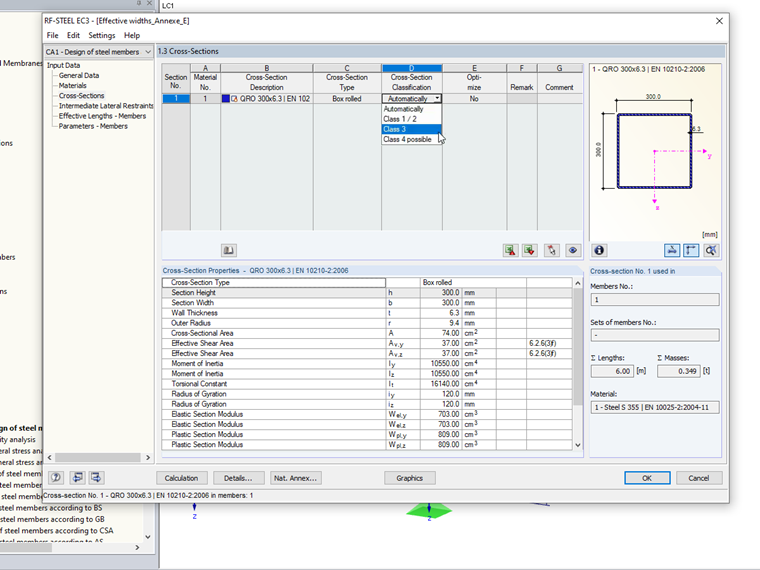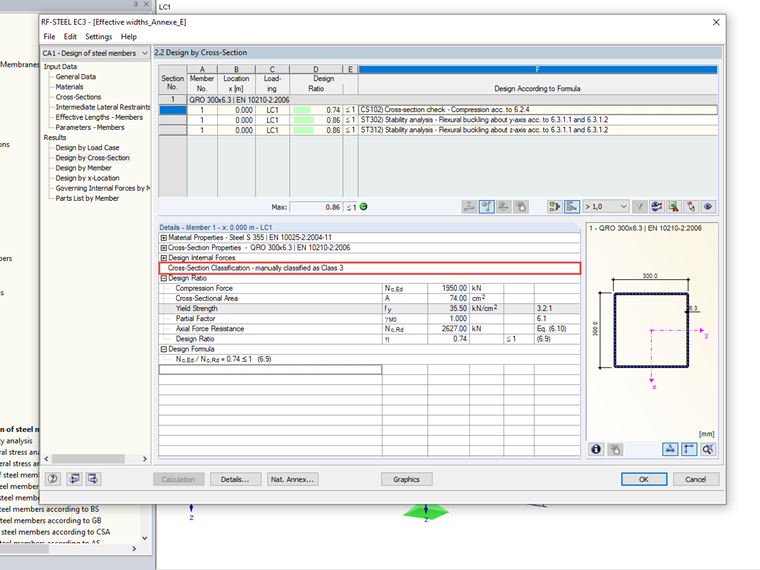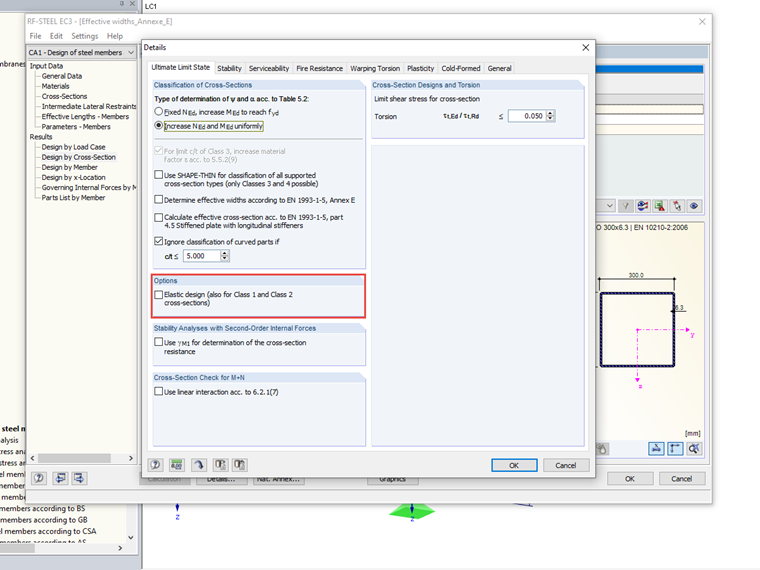Selection of Cross-Section Class in Add-on Module
By classifying cross-sections according to EC3 and EC9, the local stability risk due to normal stresses is considered in the design. The cross-section classes and their meanings are also described in detail in other technical articles (see the links below).
For example, if the cross-section is embedded in concrete, the plates cannot buckle locally and it is not necessary to consider the risk of buckling in the design. In order to also apply this fact in the add-on module, the cross-section class can be specified manually. It can be entered in the cross-sections' input window.
The selected cross-section class is now used by the add-on module in all designs performed for this cross-section. There is no further check, and local buckling remains unconsidered.
This option is available in the RF-/STEEL EC3, RF-/ALUMINUM, and RF-/TOWER Design add-on modules.
Enforcing Elastic Design Concept via Classification into Cross-Section Class 3
Manually classifying cross-sections of class 1 or 2 into cross-section class 3 can also be used to force an elastic design on the add-on module. However, if you want to apply this to any cross-section, it is preferable to select the elastic design concept in the detailed settings of the add-on module.



